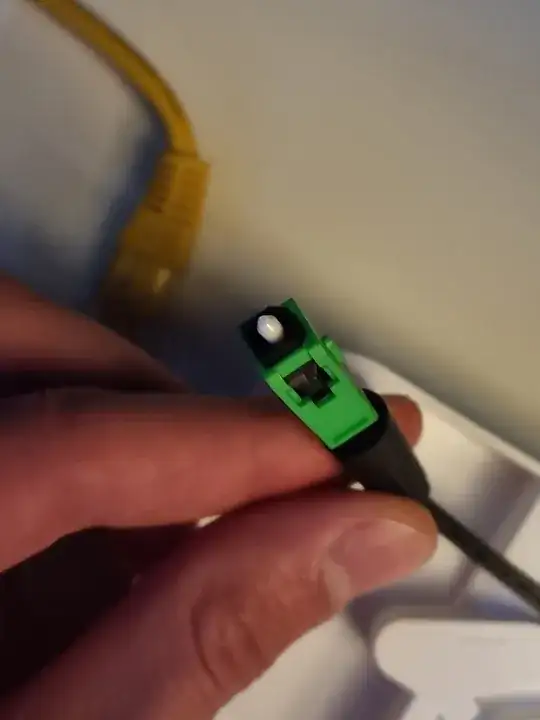Be very careful. You seem to be in way over your head and could get in serious trouble with your provider if you get this wrong.
As the other answer has said, that is a SC connector with "angle polished" (APC) mating surfaces. A connector widely used by telcos for single mode fibre. There are technical pros and cons to flat polish verses angle polish but they aren't hugely relevant here other than to say that flat polish is more common in the computer networking equipment world, while angle polish is more common in the telco world.
Mating an angle-polished connector to its flat-polished (PC, or UPC) counterpart will result in high signal loss and can damage the mating surfaces of the connector. So angle polished connectors are colour coded green to reduce the risk of accidental mismating.
But the more serious issue here is that most fibre to the premises "broadband" services are based on passive optical network (PON) technology. One port on the equipment at the telephone exchange serves multiple customers (potentially as many as 64, though in practice probably less), though a passive optical splitter/combiner located close to the customers. This saves both ports on the exchange equipment and fiber in the ground, while avoiding the reliability issues inherent in operating active equipment in street-side cabinets.
But it also means that use of the correct equipment on the customer side is vital. If inappropriate equipment is connected then there is a risk that it not only fails to establish a link, but also knocks out all the other subscribers on the same splitter.
And even if the equipment you have is compatible on the protocol level, it must be correctly configured to authenticate to the equipment at the service provider.
